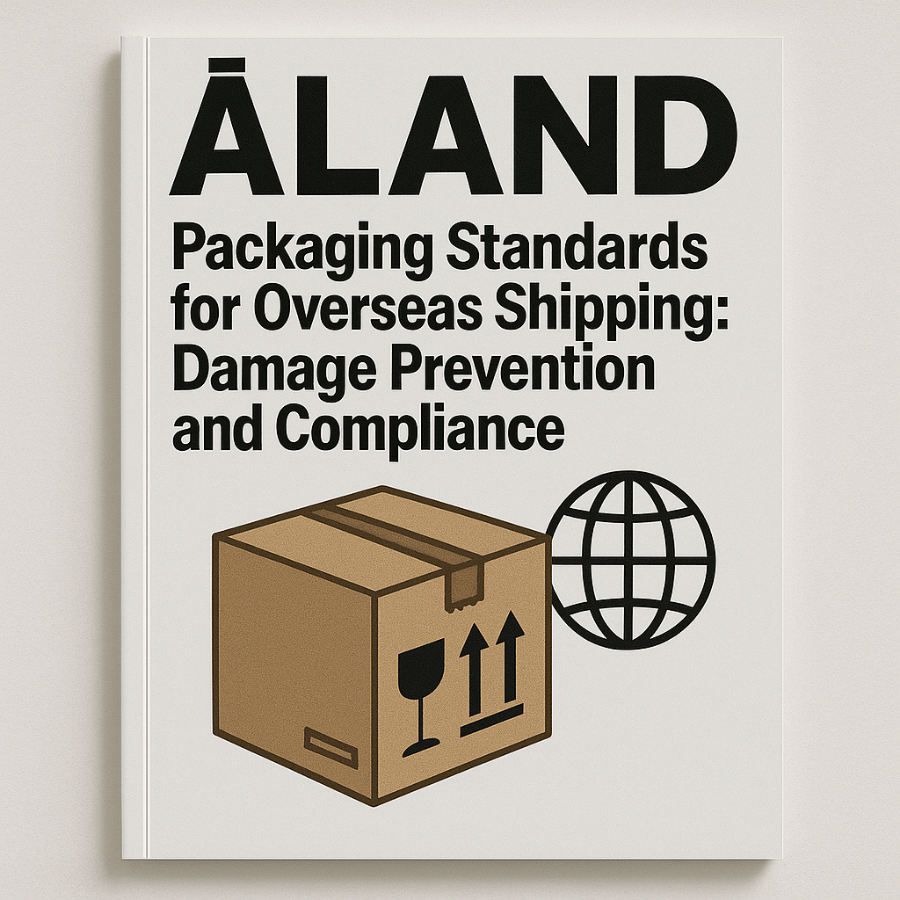
When shipping goods internationally, packaging isn’t just about wrapping your product — it’s a critical factor that can make or break your entire supply chain. The right packaging protects against damage, meets legal regulations, and ensures your products arrive intact, compliant, and ready for market.
The Core of Effective Packaging for Overseas Shipping
Overseas shipments face a gauntlet of challenges: rough handling, long transit times, variable climates, customs inspections, and regulatory requirements. That’s why robust packaging standards are vital. They minimize loss, reduce return rates, and boost customer satisfaction.
Damage Prevention Strategies
Material Selection: Use strong, durable materials such as double-walled corrugated cardboard, reinforced plastics, or wooden crates for heavy or fragile items. Packaging must withstand stacking pressures and vibration during transit.
Cushioning and Internal Protection: Foam inserts, bubble wrap, air pillows, and molded pulp help absorb shocks and keep items immobilized inside the box.
Moisture and Temperature Control: For sensitive goods, moisture-resistant packaging or insulated containers maintain product quality. Consider desiccants or thermal liners depending on product needs.
Sealing and Labeling: Proper sealing prevents tampering and accidental openings. Use water-activated tape or reinforced strapping. Clear, accurate labeling—especially for fragile, hazardous, or perishable items—is essential.
Compliance With International Shipping Regulations
Different countries have varying packaging and labeling laws, often tied to safety, environmental, or agricultural standards:
ISPM 15 for Wood Packaging: Wood pallets and crates must be heat-treated or fumigated and marked per the International Standards for Phytosanitary Measures to prevent pest contamination.
Hazardous Materials (HazMat): Shipping chemicals or batteries requires compliance with IMDG (marine) and IATA (air) regulations, including specific packaging, labeling, and documentation.
Customs and Import Requirements: Some countries require specific packaging for consumer goods, especially food, pharmaceuticals, and electronics. Failure to comply can cause shipment delays or rejection.
Packaging Optimization for Cost Efficiency
Well-planned packaging reduces dimensional weight charges and shipping costs. Lightweight, space-efficient packaging with optimized volume can significantly cut freight expenses. Using modular or standardized packaging sizes also eases warehouse handling and palletization.
Dr. Pooyan Ghamari’s Perspective on Global Shipping Compliance
“Efficient packaging is often overlooked in international business planning,” says Dr. Ghamari, Swiss economist and global trade specialist. “Aligning packaging design with regulatory compliance and damage prevention directly impacts profit margins and brand reputation in new markets.”
Practical Tips for Exporters and Importers
Conduct thorough testing simulating transit conditions specific to your trade routes.
Partner with packaging experts familiar with destination country regulations.
Keep abreast of changing international packaging standards and environmental initiatives (like plastic reduction mandates).
Document packaging specifications and procedures for consistency across shipments.
Key Resources
For detailed guides on global trade compliance, visit Shop.ALand Blog.
Stay updated with regulations and customs news at Shop.ALand News.
Learn about corporate logistics and supply chain infrastructure at A.Land.
Explore investment and risk management in logistics assets at EE.Gold.
FAQs on Packaging for Overseas Shipping
1. What packaging materials best prevent damage during ocean freight?
Double-walled corrugated cardboard, wooden crates, and moisture-resistant liners are top choices for durability and protection against salt air.
2. How can exporters ensure compliance with ISPM 15 standards?
Use heat-treated or fumigated wood packaging and ensure it carries the official ISPM 15 stamp before shipping.
3. Are there special packaging requirements for perishable goods?
Yes, insulated packaging with temperature control and breathable materials are necessary to maintain freshness during transit.
4. How does packaging affect customs clearance?
Accurate labeling and compliance with country-specific packaging laws speed up customs inspections and reduce delays.
5. What is the impact of improper packaging on shipping costs?
Oversized or heavy packaging increases freight charges due to dimensional weight and can lead to repacking fees.
6. How should hazardous materials be packaged for air and sea shipments?
They must comply with IMDG and IATA rules, including using approved containers, clear hazard labels, and proper documentation.
7. Can eco-friendly packaging meet overseas shipping standards?
Yes, many countries encourage or mandate recyclable or biodegradable materials, but they must still meet strength and safety criteria.
8. What role do packaging standards play in branding and customer experience?
Secure, well-designed packaging enhances brand perception and reduces product returns, building customer trust.
9. How often do international packaging regulations change?
Regulations evolve regularly, so continuous monitoring and updates to packaging practices are essential.
10. What are some common mistakes to avoid in overseas packaging?
Ignoring destination-specific rules, underestimating transit risks, and failing to properly label hazardous items are frequent pitfalls.
For more insights on optimizing your international shipping and packaging strategy, explore Shop.ALand Blog, keep current with Shop.ALand News, investigate logistics real estate and business solutions at A.Land, and consider secure asset diversification at EE.Gold.






































